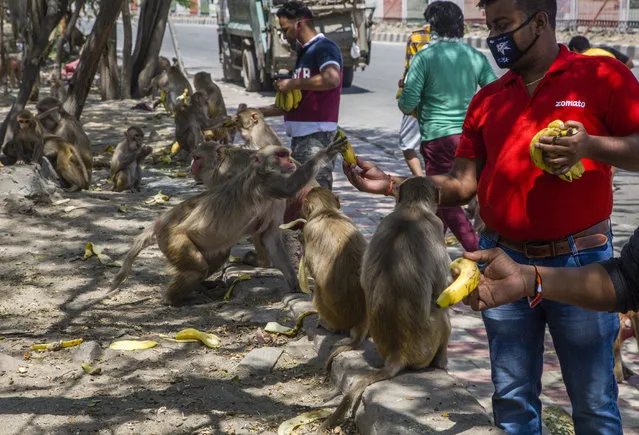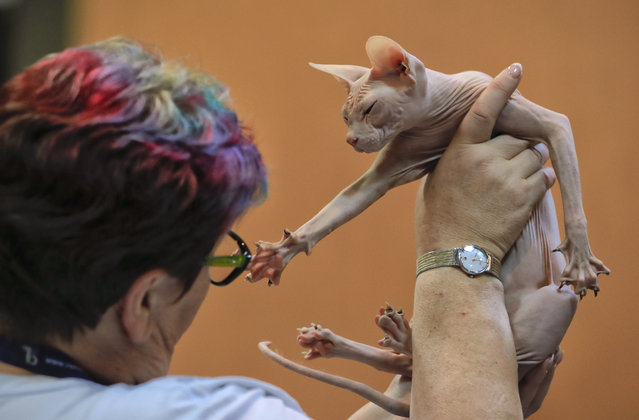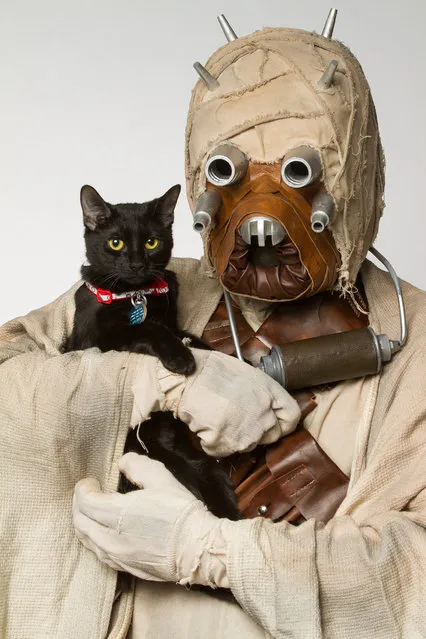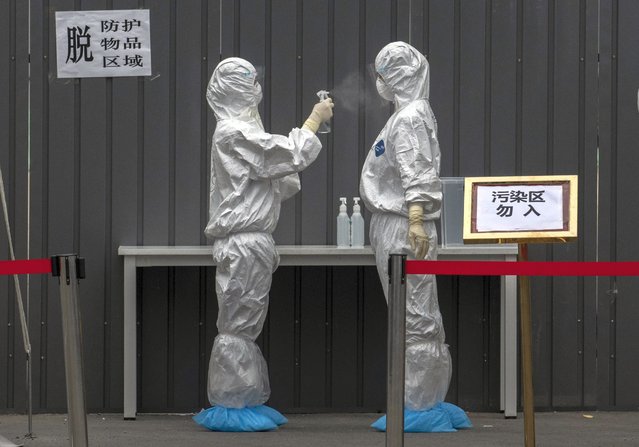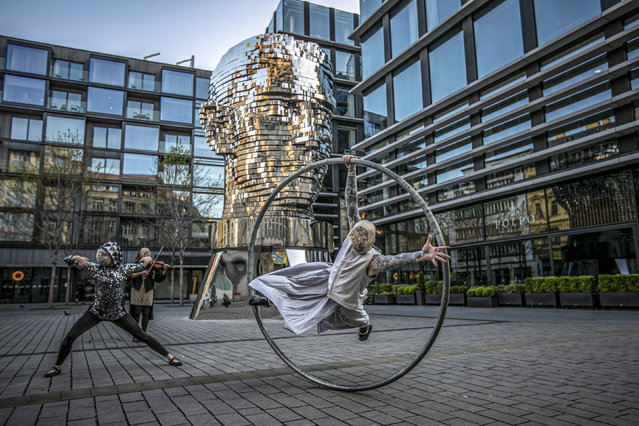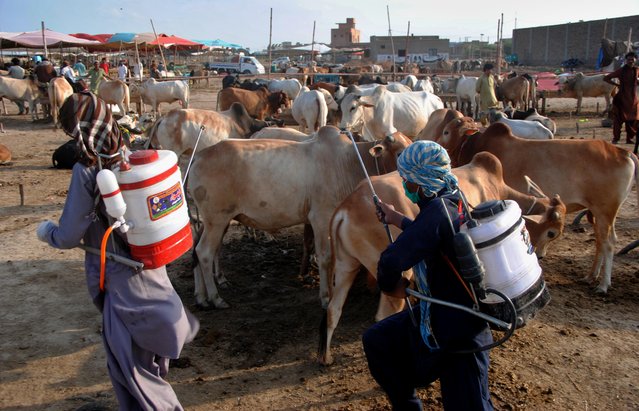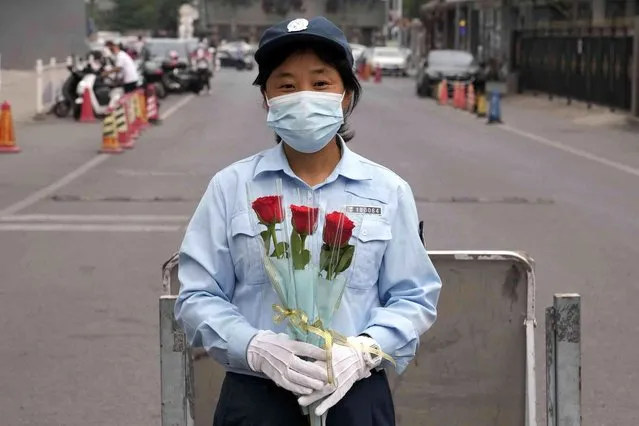
A municipal worker who helped with traffic control near a school is presented with flowers at the end of the national college entrance examinations, known as the gaokao, in Beijing, Friday, June 10, 2022. More than 11 million high school students throughout China took the annual college entrance exams which started on Tuesday after the country has just overcome severe COVID-19 outbreaks in Shanghai and Beijing, according to state media. (Photo by Ng Han Guan/AP Photo)
20 Jun 2022 04:08:00,post received
0 comments

